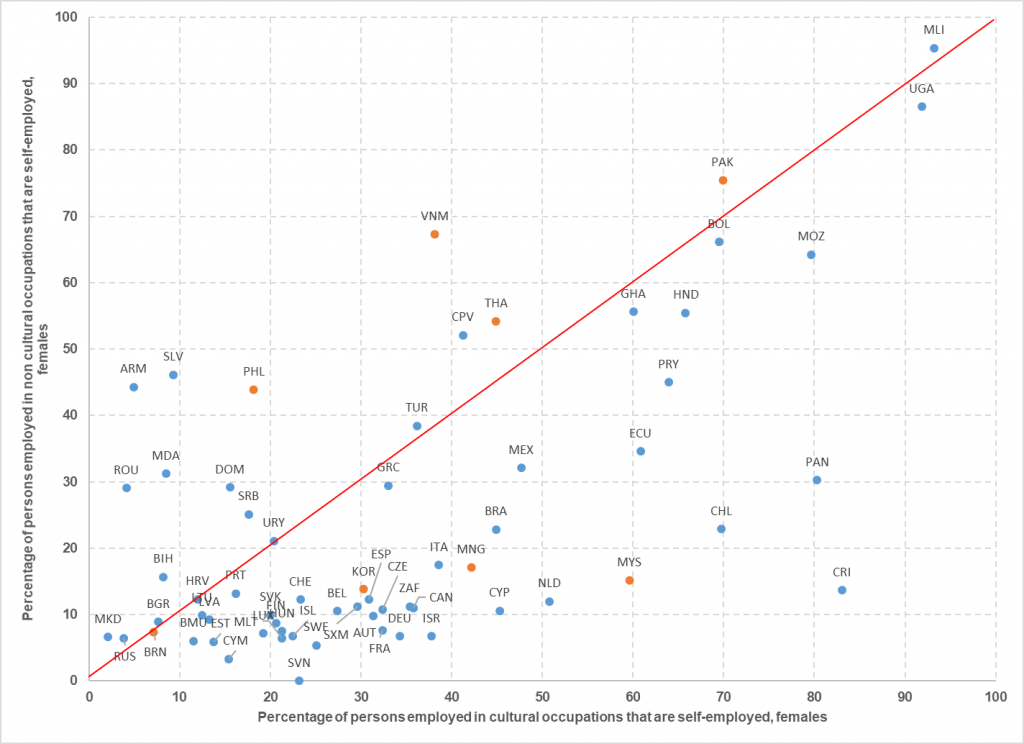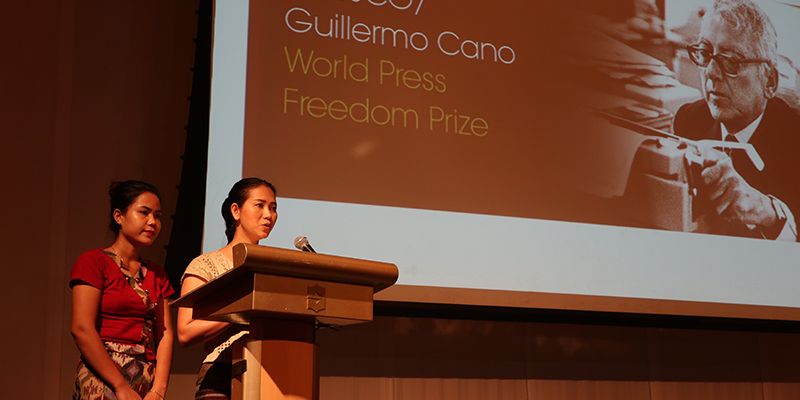UIS: In Asia, culture does not provide ‘decent work’ for most women
The culture sector in Asia fails to provide the majority of women engaged in this area with “decent work”, according to a newly released factsheet from the UNESCO Institute for Statistics (UIS).
The factsheet, “Precarious situation for women working in the field of culture”, profiles people employed in the culture sector, with a particular focus on women, who account for the majority of workers in this area across Asia. More than 50% of those employed in cultural occupations in South-Eastern Asia are women, according to data from 2015, while men outnumber women in the culture sector in only two countries, Brunei Darussalam and Pakistan.
The UIS collects data on cultural employment to help monitor Sustainable Development Goal 8 target 5: “By 2030, achieve full and productive employment and decent work for all women and men, including for young people and persons with disabilities, and equal pay for work of equal value.”
Decent work provides a reasonable income to sustain an individual’s needs. While the UIS survey does not collect data on income, other data can be used to assess whether an industry provides decent work – for example the need to take on more than one job.
Available data show that women in cultural occupations are more likely to have more than one job compared to women in non-cultural occupations. On average, 10% of women in cultural employment hold more than one job, compared to 7% of those who work outside the sector.
Women working in the culture sector often find themselves in a precarious situation. In 85% of countries for which data are available, more women are working part-time in cultural occupations than men. The Philippines has the highest proportion of women working part-time in cultural occupations in Asia, with 31%.
The proportion of women who are self-employed also provides a useful reference point for determining decent work. Globally, there were more self-employed women working in the culture sector than in non-culture sectors in 2015 in 69% of countries with available data. On average, 34% of women with cultural jobs in those countries are self-employed, compared to 24% of women in non-cultural occupations.
In half of the Asian countries with available data, the reverse is true: fewer women holding a cultural occupation are self-employed than those working outside the sector.
Figure: Contrasting picture of self-employed women with a cultural job in Asia in 2015

Which cultural domain employs the most women?
According to the UIS’ internationally comparable classification, the 2009 UNESCO Framework for Cultural Statistics, at least 70% of women in developing countries are employed in visual arts and crafts. This is true for Malaysia and the Philippines, two of the three countries in Asia with available data. In Thailand, the distribution of women in cultural employment is more evenly spread across visual arts and crafts, cultural and natural heritage, and design and creative services.
Looking at the share of women employed in each domain, women are predominantly employed in two cultural domains: books and press and cultural education and training.
*****
UNESCO Bangkok’s Assessment, Information System, Monitoring and Statistics (AIMS) Unit is the Asia-Pacific regional office of the UNESCO Institute for Statistics. For more information about the UNESCO Institute for Statistics, consult the following resources:
- UIS Fact Sheet No.47 (November 2017) “Precarious Situation for Women Working in the Field of Culture”
- UNESCO Institute for Statistics
- UIS Data Centre
Should you have any inquires, kindly contact us at aims.bgk[at]unesco.org









